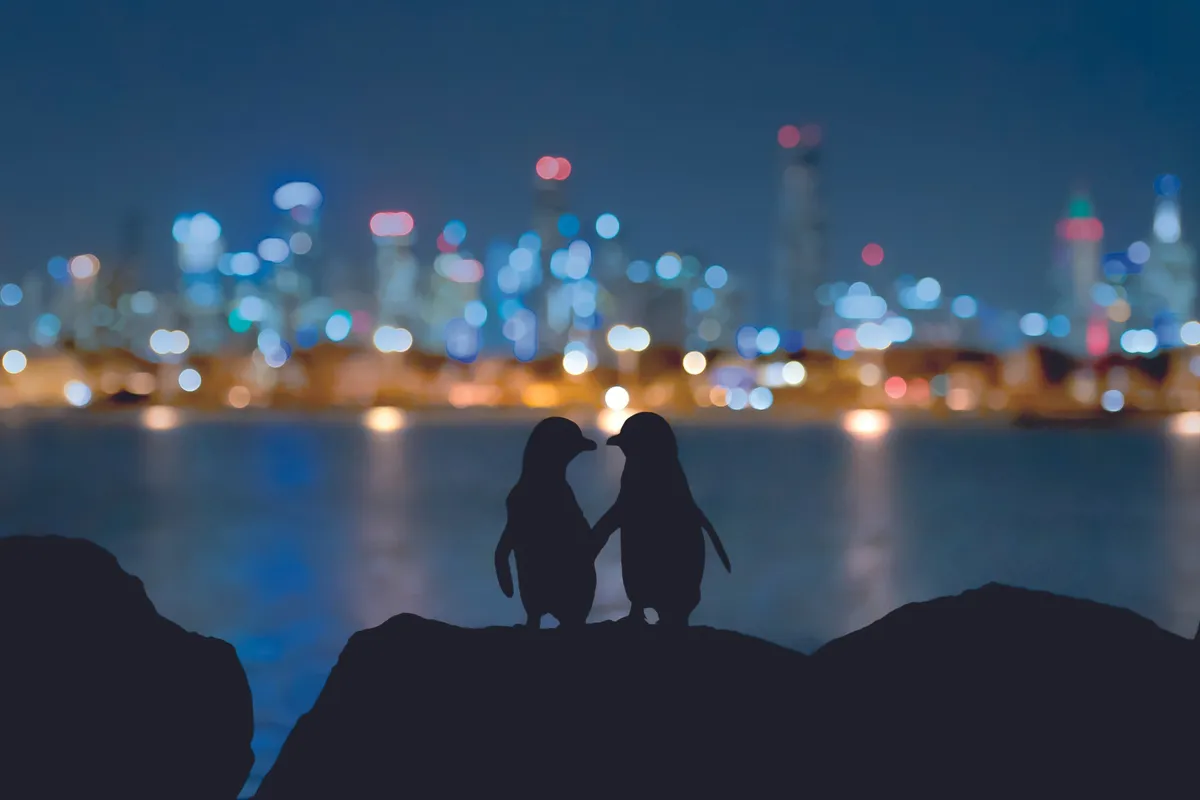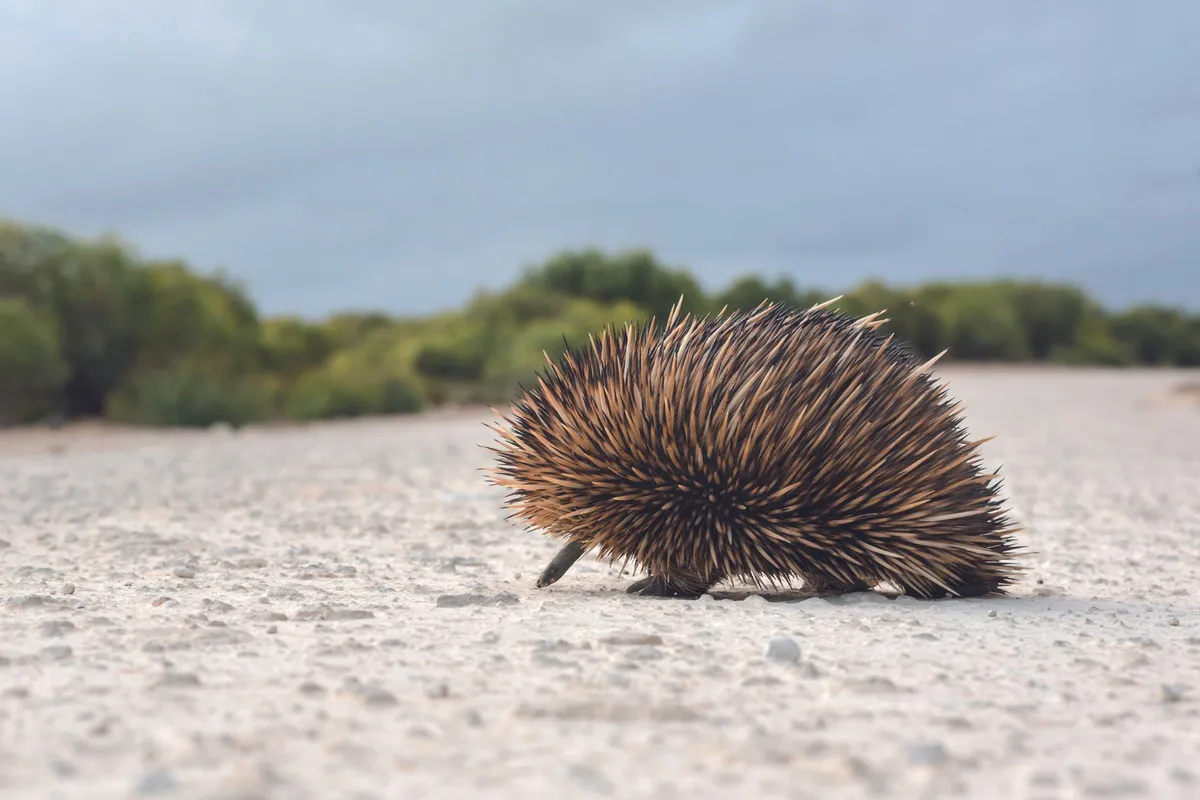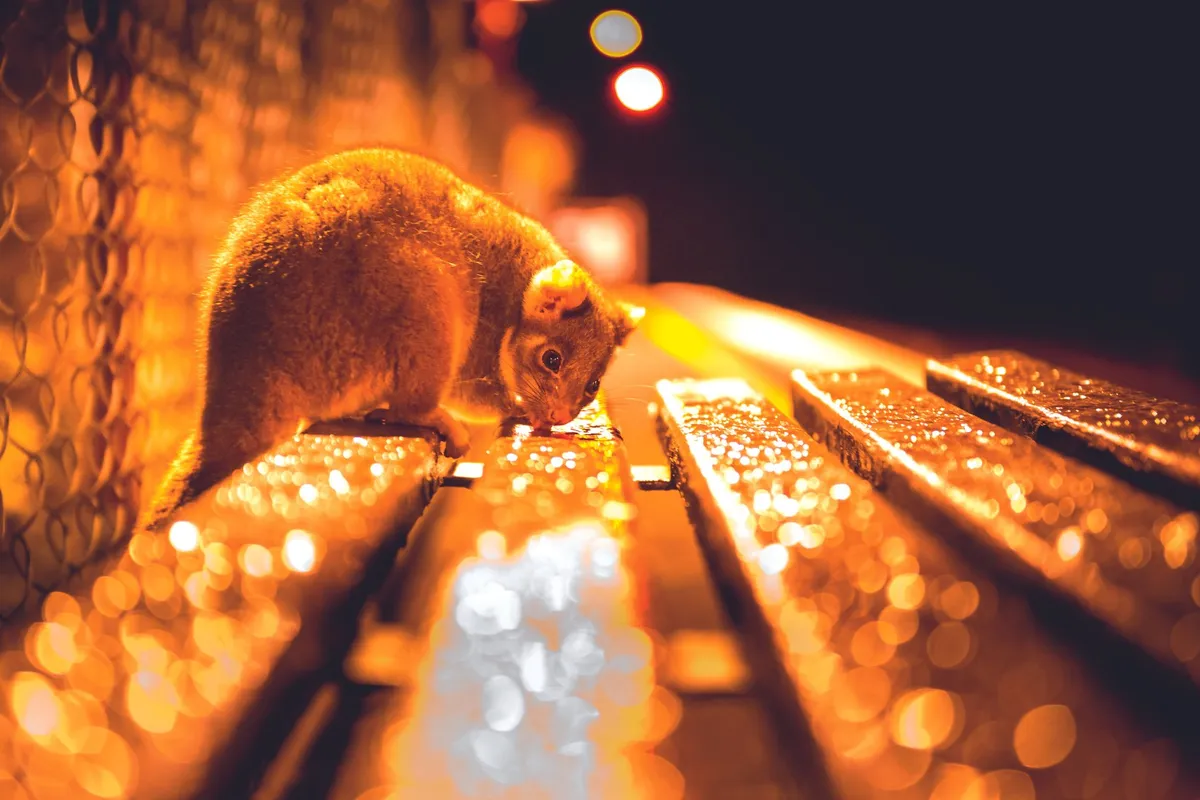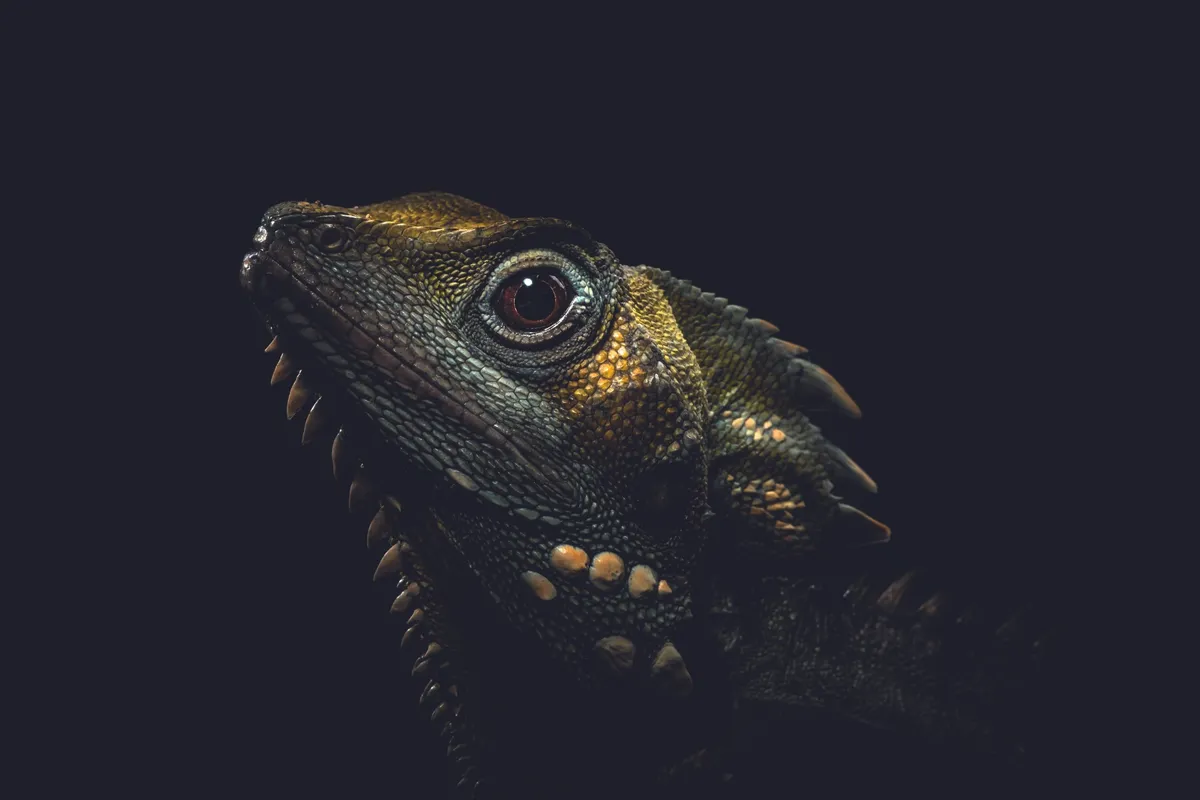When I started out as a wildlife and conservation photographer, I never used additional lighting. Over time, I started playing with flash here and there, adding one light, then sometimes two. As my skills improved, I began using flash more and more frequently, but only in the field, only during the daytime, and only as ‘fill’.
Fill light exposes dark areas of a subject to reveal more detail. Of course, there are lots of other reasons to use flash: to control the direction of light; the colour of light; the amount of light on your subject; and how dark the background is. And there are more ways than flash to do this, such as reflectors, strobes or LED panels. But for me, I used it simply because I liked the result of a little fill now and then.
Then one night about six years ago, I was photographing the little penguins of Melbourne, trying to capture their silhouettes in the dark against the city skyline. Not far from me was a group of tourists trying to photograph the birds before they entered their burrows. Some were using on-camera flashes, others just their mobile phones, with the built-in flashes going off.
There were signs that said ‘No Flash’, and the volunteer guides did what they could to educate the visitors, but the relentless explosions of light continued throughout the evening. Bothering me in the distance, I could only wonder what it must have been like for these little penguins close up.

What I saw that night got me thinking about the impact a photographer’s lighting could have on wildlife – whether using flash in the field or even on captive animals. Having trained as a bioethicist, I really wanted to make sure I was doing the ‘right thing’. And having a zoology degree, I wanted the ‘right thing’ to be evidence-based. I hoped I could develop a simple checklist to guide me, but as I delved deeper, I found little research to draw on. Even defining the ‘right thing’ was a challenge.
For example, could it be justifiable to potentially stress an animal if the resulting image might significantly help its species? Many field researchers capture, tag and release animals, knowing this process stresses the individual animal, in the hope of gaining knowledge for the greater good. And did working with scientists and researchers (ethically approved ones), provide some type of moral stamp of approval?

Some of the negative effects of using additional light are generally obvious. We will instinctively cover our eyes if someone shines a torch in our face, for instance, and we know that car headlights can stun animals, stopping them in their tracks on busy roads as a large threat in the form of a speeding vehicle bears down.
But not everyone knows that this sort of ‘blinding’ can have a consequential stress response that, for instance, may lead a penguin to abandon its nest, potentially resulting in the death of a chick. And that this kind of stress, if repeated or prolonged, takes a significant physiological toll on many animals, just as it does on humans, with effects ranging from immunosuppression and reduced reproduction success through to shorter longevity.
With all these thoughts rattling around in my head, I decided the first thing to do was understand exactly what negative impacts using additional lighting could potentially have. I read articles and spoke to academics and zoo-based wildlife welfare experts, and discovered that there are generally three types of impact I should be considering – the physical, the emotional, and the behavioural – and that these can sometimes influence each other.

Physical impacts include those things that would immediately, or sometime in the near future, directly affect an animal’s body. Things like short or long-term damage to the eyes, the triggering of a ‘startle’ response causing animals to hurt themselves, or the loss of visual acuity, impacting their ability to navigate, hunt or protect themselves.
Emotional impacts would be those actions that affect how they ‘feel’ – putting them into states of distress, fright or panic, for example, and all with the potential to have physical consequences, such as an increase in stress hormones.
And finally, behavioural impacts would be anything that altered natural routines, such as eating, hunting, defence, parenting and resting.

I also learnt that different lighting techniques used on different animals and in different situations could have very different consequences, and that sadly, there was no single simple algorithm to suggest what to do and when.
For example, the Australasian gannet keeps its eyes open when penetrating the water to catch food, adjusting focus instantaneously. Knowing this, you could argue that it’s not acceptable to use flash when an individual dives into the water – potentially blinding it and preventing it from hunting – but is acceptable as it returns to the surface, where additional lighting would be no more intense than midday water reflection.
“When the time comes, I’ll always pay attention to what the subject is telling me and respond accordingly.”
Conversely, platypuses close their eyes when diving, using electrical receptors in their bills to find food. So, perhaps it is acceptable to use a flash at night, when they are underwater with their eyes closed, but not when they are on the surface.
And what about gliding mammals? For nocturnal species, with their super-light-sensitive eyes, having a flash blasted at them mid-flight – and potentially blinding them whilst attempting a landing – surely must put them in peril. You wouldn’t do that to a pilot attempting to land a plane at night. But it’s probably okay to use light on diurnal gliders.

As with any form of wildlife photography, the proximity to your subjects can also be an important consideration, as can where the additional lighting is placed. For example, whether it is front on, side on or behind has the potential to determine how much the light is in the animal’s direct field of view and is therefore noticeable to them.
Interestingly, I learned something relevant to this that my diving friends may love or hate. An Australian study recently demonstrated that the use of flash has no negative impact on seahorses, because of what they called the ‘ripple effect’. When sunlight travels through waves or wavelets on a sunny day, it causes very short-duration, high-intensity bursts of light, just like a flash. Consequently, the use of flash doesn’t bother them or cause a stress response. The bad news is that the researchers also found that simply the act of getting close enough to use a flash did stress them.
There are also various technical and scientific elements to consider, such as the colour of light. Microbat species such as Myotis and Plecotus don’t seem bothered by red light (possibly because it doesn’t appear bright to them). So, using a red gel might sufficiently mitigate any negative effects.
And what about lighting used with camera traps, especially given we don’t immediately see its impact on the animal (if at all)? These devices aren’t species-specific, so their use on a well-trodden trail might be harmless to one species, but cause stress to another, or lead it to avoid that area to its detriment. A study in 2004 described how a camera trap set up to photograph tigers saw more than a 50 per cent decline in tiger shots after the first five days, and another in 2007 reported that kinkajous – a tropical rainforest mammal – basically abandoned a branch towards which a white flash camera was aimed.

Clearly, every case is different, and there’s no one-size-fits-all solution. For night photography there are some good alternatives to traditional light sources, such as infra-red cameras, which pick up heat sources and produce a black-and-white image, or ‘starlight’ cameras, which use super-sensitive and normally larger sensors to produce colour images, but of course not all additional lighting is used at night, and this technology may not be affordable, appropriate or practical.
So what to do? So far, I’ve devised a checklist of 10 key questions that I ask myself whenever I think about using additional lighting (see list below). It is not definitive, and only partially evidence-based, but it gives me a framework to reflect upon before deciding on the ‘right thing’.
And of course, no matter what planning I do, when the time comes, I’ll always pay attention to what the subject is (or is not) telling me and respond accordingly. It’s useful to generalise and ask broad questions, but like all of us, individual animals do have individual temperaments.
As a conservation and animal-welfare photojournalist, I believe I need to keep creating images that will engage others to care more deeply, and help our natural world. The use of additional lighting can often be very important for many good reasons, and I’m not suggesting it should never be used. But I also believe I must always ask the basic broader questions in all my photography such as “Am I being considerate?”, “Is there no kinder way to do this?”, and probably most importantly, “Do the means justify the ends?”.
There is a paucity of information about the negative impact of additional lighting in photography, and I know I’ll make mistakes, but when I do use it – and I certainly will occasionally – this journey I hope has helped ensure one thing: that I’ll always try to use it with a light touch.
10 key questions to ask before using additional lighting
1. What’s the species’ general temperament?
2. What’s the individual animal’s general temperament? A captive animal may be more used to ‘unusual’ external stimulus.
3. What’s the species’ normal sensitivity to light? Consider whether they are primarily nocturnal or diurnal.
4. What’s the species’ colour-spectrum perception and sensitivity? Diving animals may be more sensitive to blue light.
5. Will the animal’s eyes be open or closed when you take the photograph?
6. How much additional light are you adding? A flash used during the middle of the day is probably less noticeable than at dusk or night-time, for example.
7. Will the light be harsh or soft light?
8. Will the light be directly illuminating the animal’s eyes? Consider whether it will be front-on, back or side lighting.
9. How many times and how long will you be using the additional lighting? Consider whether it be a quick, one-off, single attempt, or there will be multiple attempts over a prolonged period.
10. How significant are any potential negative consequences versus the real benefit in taking the image this way? A slight temporary stress impact might be justifiable if the image will be used for an effective conservation purpose.
Doug Gimesy is a conservation photographer based in Melbourne, Australia and a regular contributor to BBC Wildlife. You can read more about him at gimesy.com.
